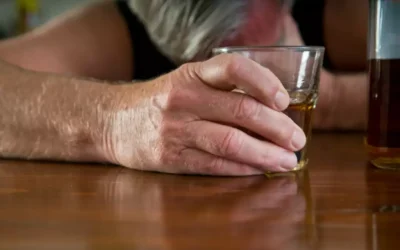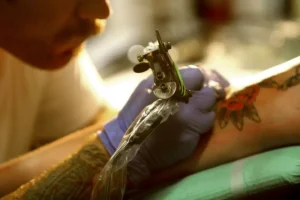45 Alcohol Relapse Rates & Recovery Statistics

Then, when that person becomes sober and experiences withdrawal, their body and their tolerance levels react accordingly, pushing their tolerance closer to normal. When a person then relapses on opioids, they take the same increased amount of opioids as they had before and the body isn’t ready to process that amount of drugs. Adopting healthy lifestyle choices, such as regular exercise, balanced nutrition, and https://ecosoberhouse.com/ effective stress management, can significantly reduce the risk of relapse. Building new, healthy habits helps individuals remain sober and enjoy a higher quality of life. Completing rehab is a major accomplishment, and it’s important to appreciate each day in recovery as the successful experience it is. That being said, living an alcohol- and drug-free life takes commitment beyond just giving up substances.
How do behavioral therapies treat drug addiction?
Thus, the substance use management should not be limited to detoxification only but emphasis should be given on longer follow up in order to prevent relapse. Hence, we decided to undertake the study to compare the correlates of relapse in alcohol and opioid dependence. The primary goal of this study was to compare the correlates of relapse in alcohol dependence and opioid dependence while assessing reasons for relapse Alcohol Relapse in both the groups. The study also compared negative affect, craving, self-efficacy, and perceived expressed emotions between the alcohol-dependent participants versus the opioid-dependent ones. Our findings on the benefits of relatively rapid entry into treatment and/or AA support the value of strengthening the referral process for individuals who recognize their alcohol problems and initiate help-seeking.
How Many People Relapse After 1 Year Sober?
- Frequency of alcohol consumption was assessed by responses to three questions asking how often per week (never, less than once, once or twice, three to four times, nearly every day) participants consumed typical amounts of wine, beer and hard liquor in the last month.
- The report also identifies the resilience that people in recovery develop as they reported few impacts on their behavioral health during the COVID-19 pandemic.
- What former clients have to say, via personal recommendations and testimonials, can speak volumes about the facility, its staff, the treatment, and the overall experience.
- Explore safe and effective methods for alcohol detox, including medical supervision, hydration, nutrition, gradual reduction, support systems, and holistic approaches, to ensure a successful start to your recovery journey.
- Living in a neighborhood with high substance use activity or near bars can increase the risk of relapse.
When comparing relapse rates for alcohol addiction with other substance addictions, it is clear that alcohol use disorder presents unique challenges. The prevalence of alcohol in social settings and the legal status of alcohol make it particularly difficult to avoid. This underscores the importance of comprehensive alcohol treatment programs that address both the physical and social aspects of alcohol misuse. Understanding the alcohol relapse rate is crucial for individuals and families affected by alcoholism. Recognizing the warning signs and understanding the complexities of alcohol dependence and alcohol abuse can help in creating effective relapse prevention plans and maintaining sobriety. This knowledge can empower those in recovery to better navigate their journey and support long-term recovery efforts.
Drugs, Brains, and Behavior: The Science of Addiction

The term “relapse rate” refers to the percentage of individuals who return to drinking alcohol after a period of abstinence. Relapse is a common part of the recovery process, indicating that alcohol addiction and alcohol use disorder are chronic diseases that require ongoing management. Understanding alcohol relapse statistics, including the relapse rate after alcohol rehab, is essential for developing effective treatment plans and relapse prevention strategies.

Counselors may select from a menu of services that meet the specific medical, mental, social, occupational, family, and legal needs of their patients to help in their recovery. Some use “spontaneous remission” while others use “spontaneous recovery.” There’s also debate over what constitutes treatment. Furthermore, researchers don’t follow up with study participants after the same amount of time. Ultimately, by investing in research, policy initiatives, and community-based programs that focus on relapse prevention and long-term recovery support, we can create a more supportive and empowering environment for individuals struggling with addiction. Consistent with previous research [2,7,8,11], we found lower short-term remission rates among individuals with alcohol use problems who did not participate in treatment or AA soon after initiating help-seeking than among those who did.
Although all data analyzed are included within this article, they may be shared when necessary but also data collection forms. The report also identifies the resilience that people in recovery develop as they reported few impacts on their behavioral health during the COVID-19 pandemic. Rates of substance use, addiction, and related issues vary by age, gender, ethnicity, and other demographic classifications. Data analyses were carried out using Statistical Package Social Sciences 17 software (SPSS, USA).
Alcohol Relapse Warning Signs, Prevention, and Treatment
- Alcohol rehab can help you not only end your addiction, but also address the underlying causes and consequences of addiction.1 Rehab facilities are located throughout the U.S., and many offer specialized treatment that can cater to individual needs.
- Finally, no biological factors were studied in relation to relapse and the sample size was small.
- The likelihood of relapse rose to 45% for individuals with one risk factor, 70% for individuals with two risk factors and 86% for individuals with three or four risk factors.
- Thus, in part, the benefits of help we identified are due to self-selection and motivation to obtain help, as well as to obtaining help per se.
Relapse is total dysfunction, where a person has continually engaged in a pattern of thoughts or behaviors that destabilizes recovery and makes the use of alcohol or other drugs appealing. To this person, a return to addiction makes sense because they’ve been internalizing, listening to and agreeing with the logic of addiction. Natural remission may be followed by a high likelihood of relapse; thus, preventive interventions may be indicated to forestall future alcohol problems among individuals who cut down temporarily on drinking on their own.
Data analysis
These individuals may have less severe problems and/or more personal and social resources that can help them initiate and sustain natural recovery. By integrating mental health services into their programs, Camelback Recovery ensures that comorbid mental health disorders are treated alongside alcohol addiction. A personalized and comprehensive treatment plan is essential for preventing alcohol relapse. Camelback Recovery offers a variety of treatments, including medication-assisted treatment, to support individuals in their recovery process. The chronic nature of addiction means that for some people relapse, or a return to drug use after an attempt to stop, can be part of the process, but newer treatments are designed to help with relapse prevention.
